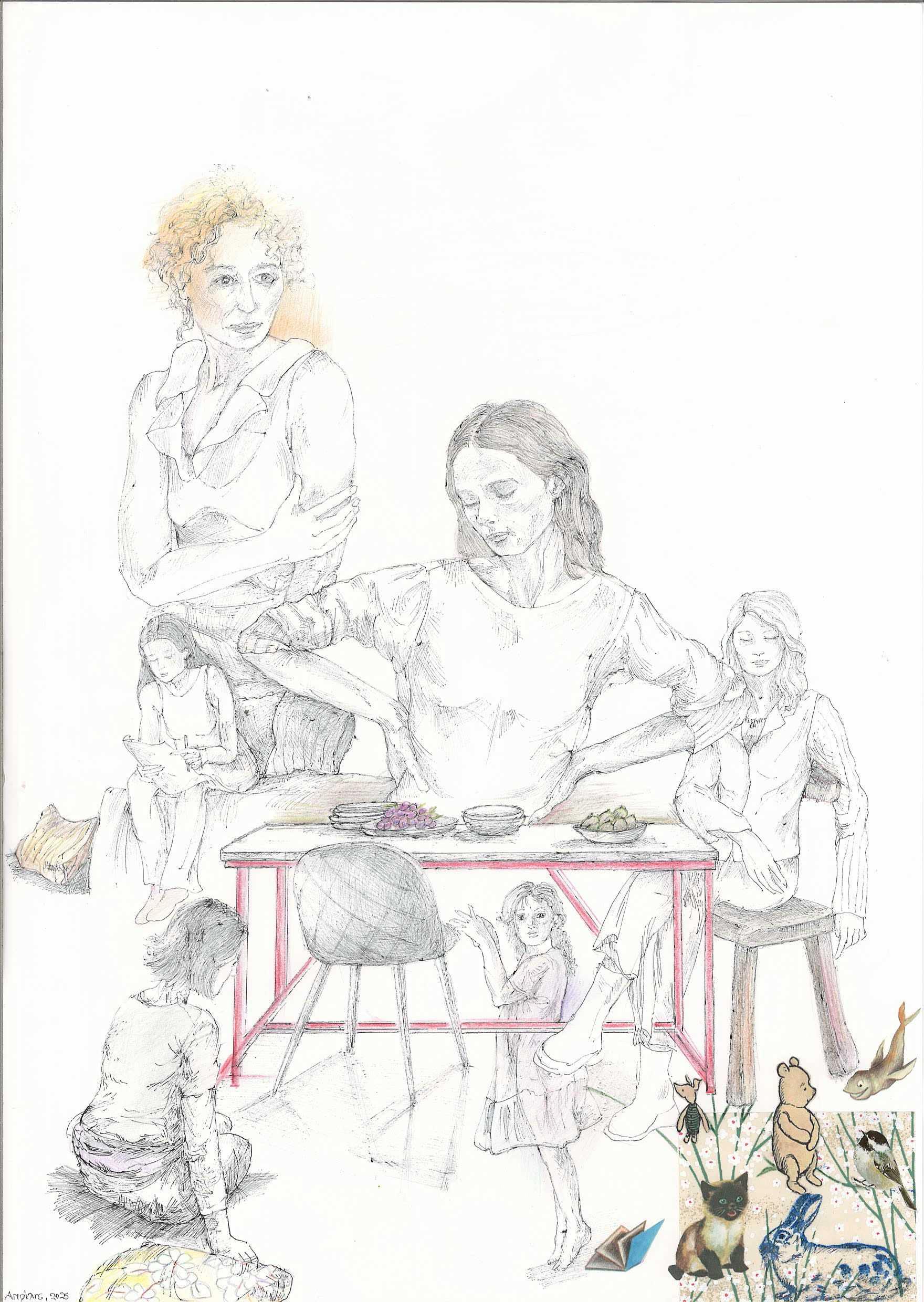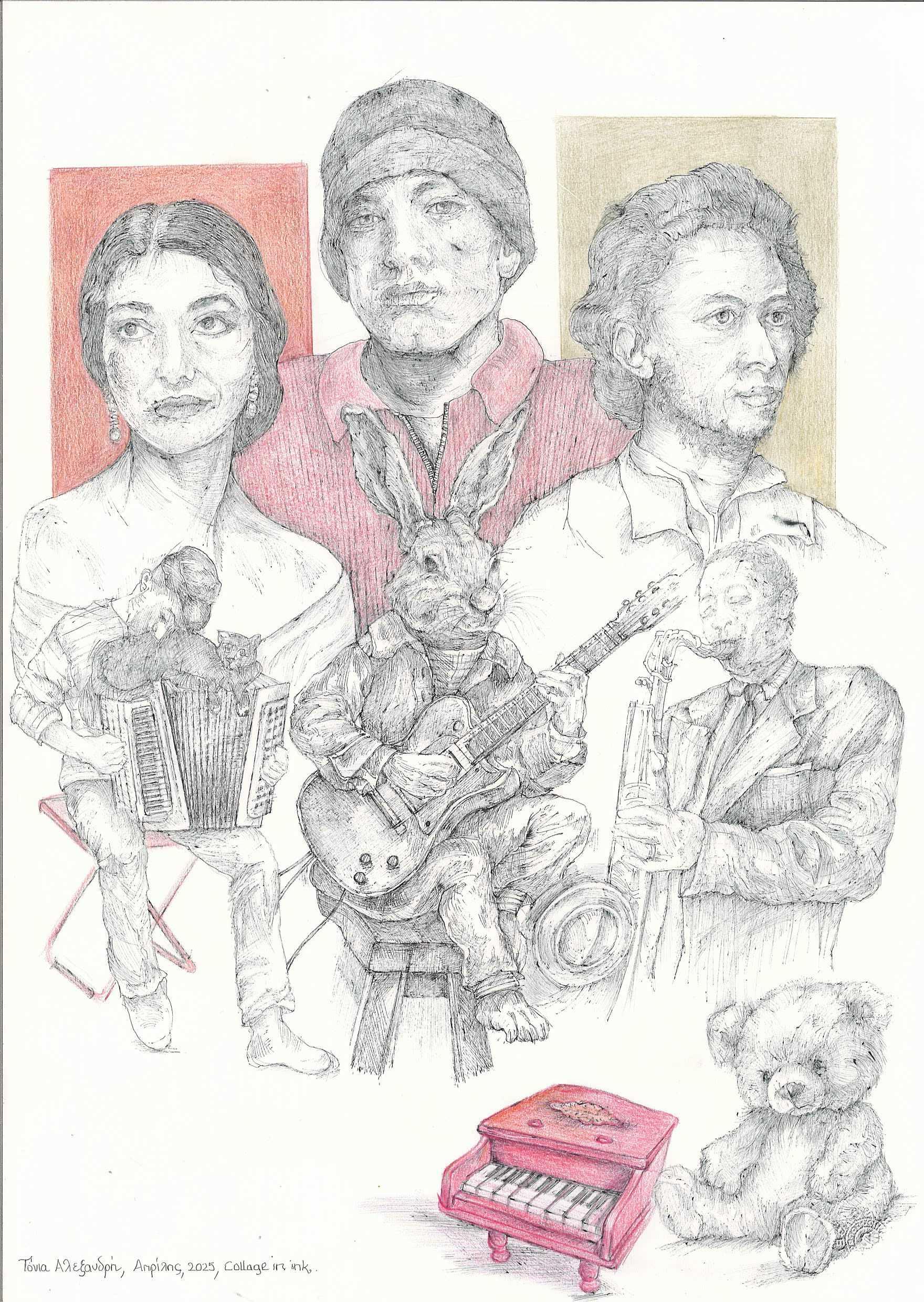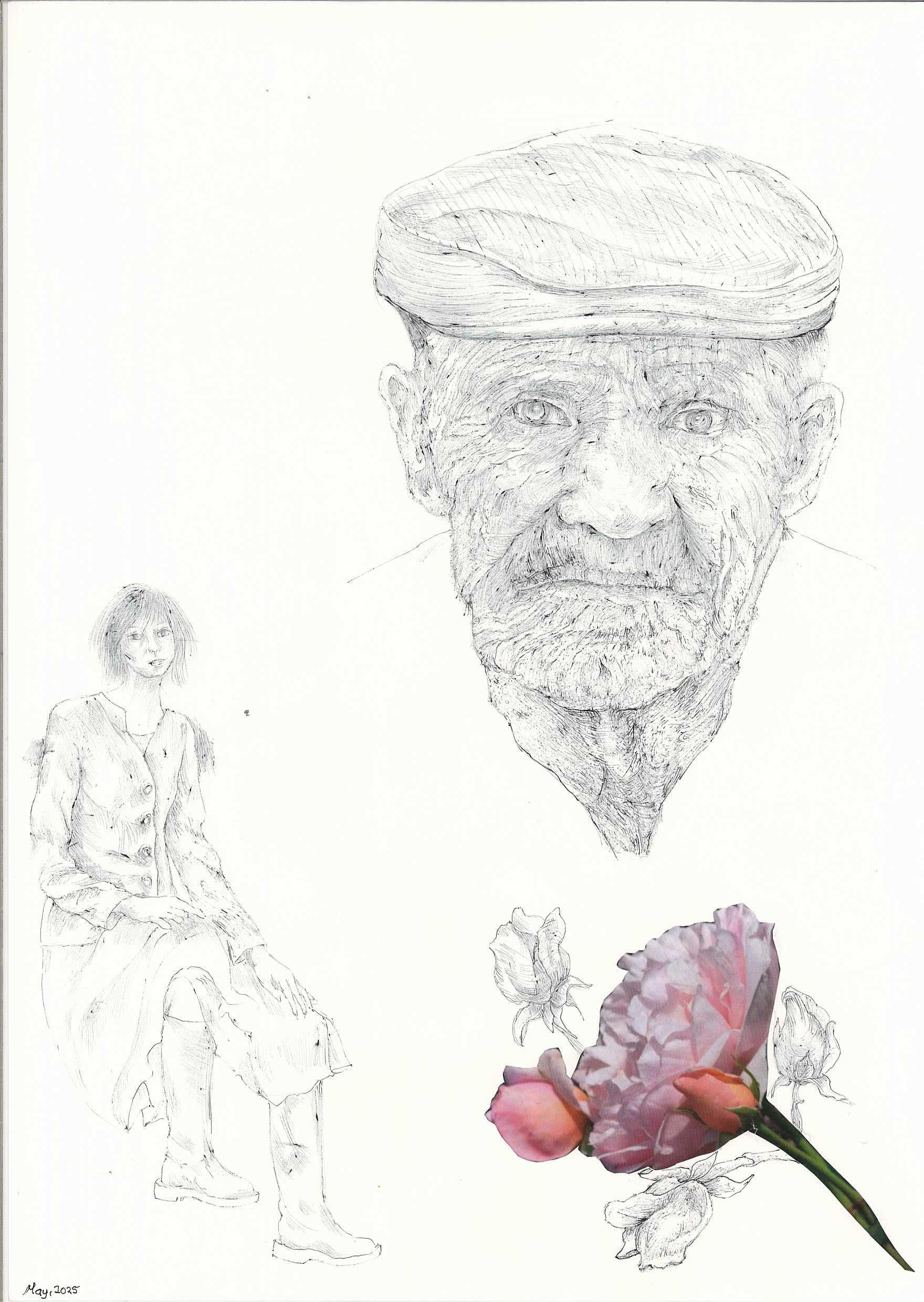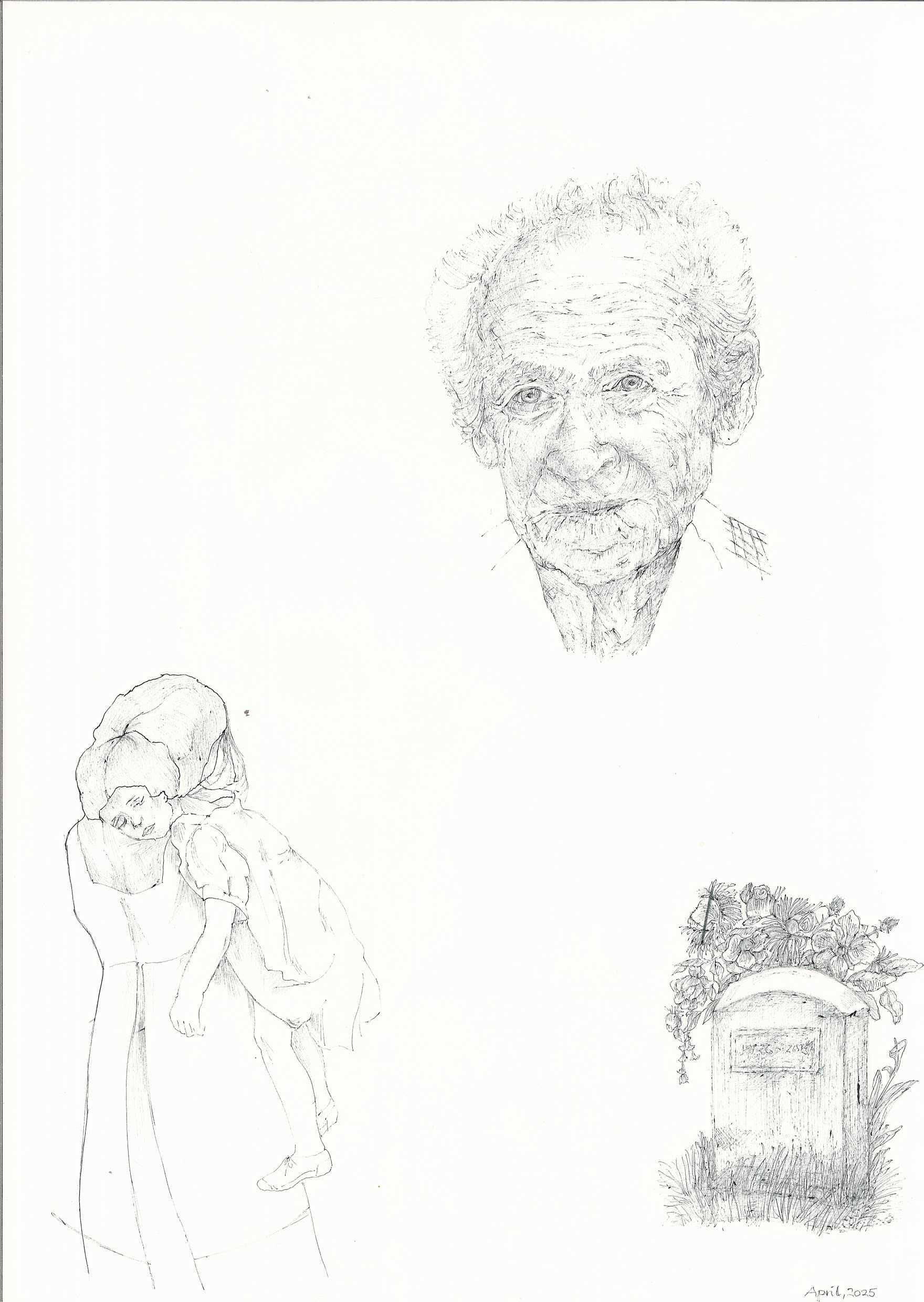An inspiring story from Australia
“Children become attached to whoever functions as their primary caregiver. But the nature of that attachment—whether it is secure or insecure—makes a huge difference over the course of a child’s life. Secure attachment develops when caregiving includes emotional attunement. Attunement starts at the most subtle physical levels of interaction between babies and their caretakers, and it gives babies the feeling of being met and understood.” From The Body Keeps the Score by Bessel van der Kolk
Today’s post includes a book from Australia, and a brief introduction to a podcast on attachment.
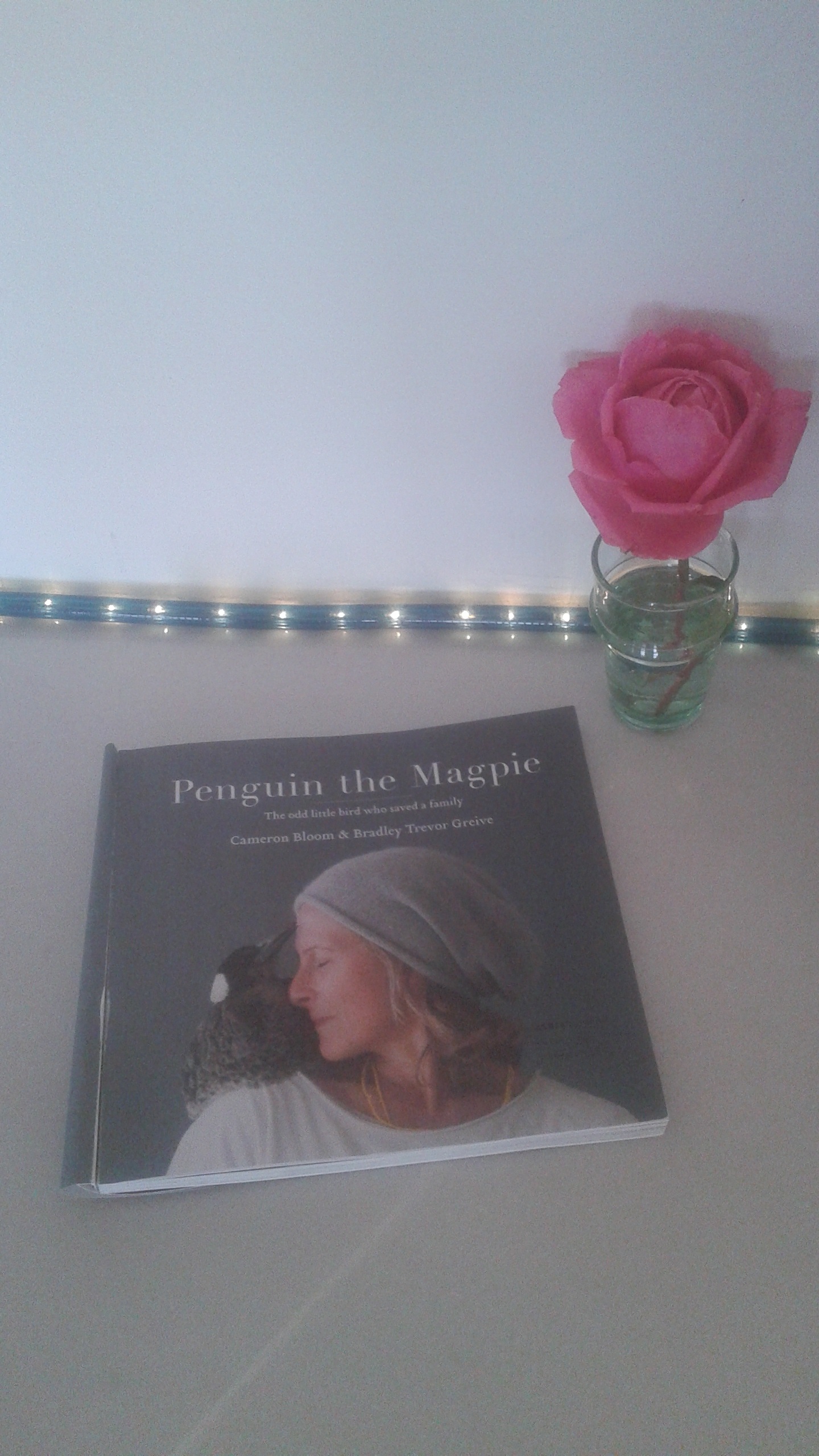
Penguin the Magpie: The Odd Little Bird Who Saved a Family, by photographer Cameron Bloom, and friend, writer and wild life conservationist, Bradley Trevor Greive, is a true story of heartache, love, courage and hope. It is the story of a rescued wounded Magpie chick and her human family, which is in deep pain and distress. The book recounts Sam Bloom’s terrible accident, which leaves her paralyzed and feeling hopeless, and her journey back from the edge of death and the depths of despair and depression, with the aid and love of her family and a small magpie.
The book begins with Eduardo Galeano’s poem: Family
As people know in black Africa and indigenous America, your
family is your entire village with all its inhabitants. Living or dead.
Your relatives aren’t only human.// Your family also speaks to you….. // in the rain that kisses you // and in the birdsong that greets your footsteps.
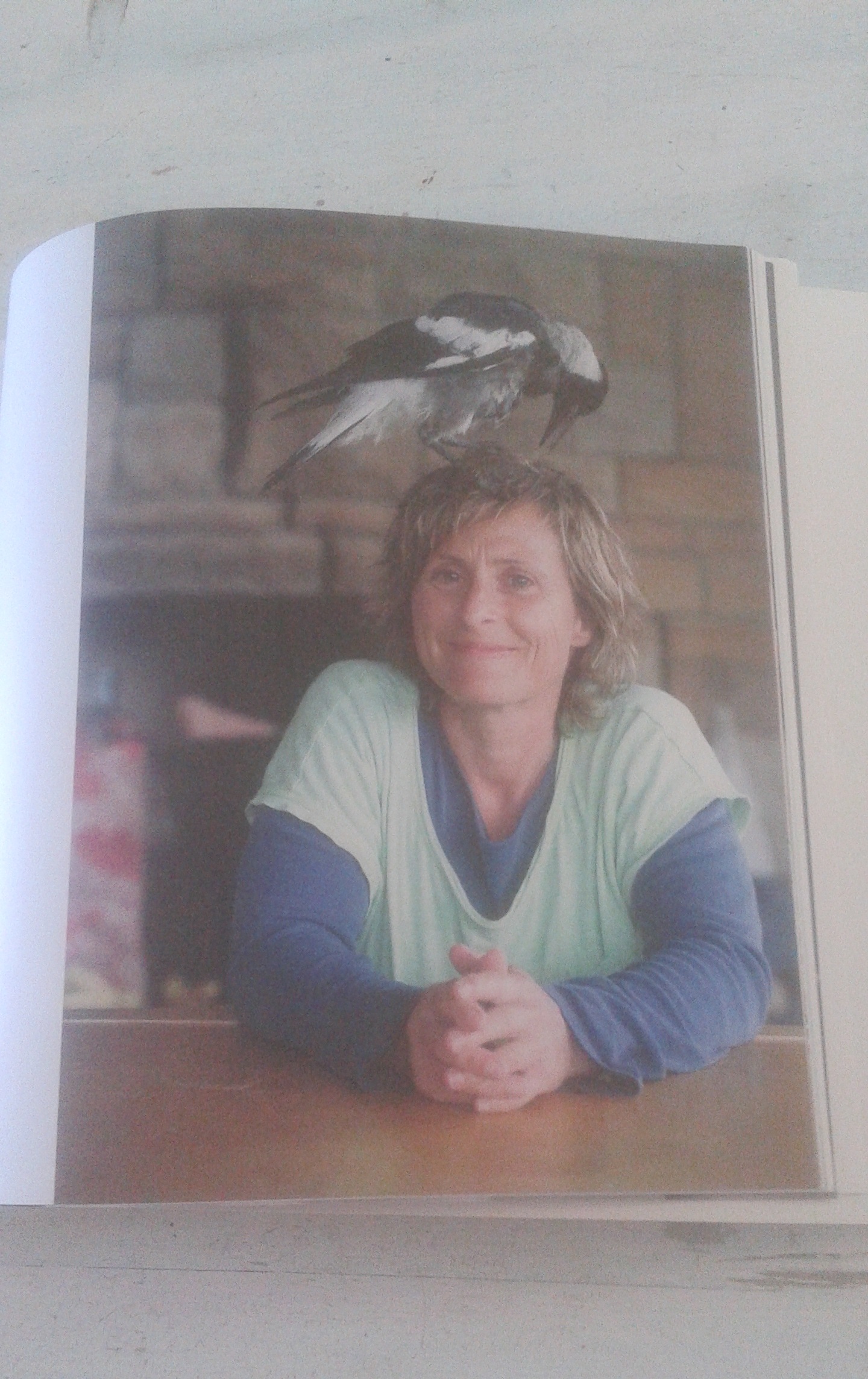
Sam Bloom was a shy, sporty Australian girl determined to become a nurse and travel across Africa. She fell in love with Cameron Bloom, passionate about photography and travelling, and together they travelled around the world, raised three boys and built a life together on Sydney’s Northern Beaches. And then, in a single horrific moment in Thailand, where the family had gone on a trip, everything changed.
During Sam’s darkest moments, Penguin, an injured magpie chick abandoned after her fall from her nest, and rescued by her son, enters their lives. Penguin becomes a focal point of love and joy, as the whole family nurses her back to health. They all forge a bond with Penguin, and the bird becomes attached to them, especially, Sam. Watching this little bird recover and grow, and eventually fly, brings them joy and healing, and serves as inspiration for Sam in her own journey. Her husband’s beautiful photographs capture this experience.
Through the love and support of her environment Sam was able to reconnect with her love for the ocean. She found a renewed sense of purpose in taking up competitive kayaking, which placed her 13th in the world. She went on to become a para-surfing champion, winning three gold medals for Australia. Ten years after the accident she and her husband were able to return to Africa, with their sons, Rueben 22, Noah 20, and Oli 18, this time. Today Sam Bloom’s activities today include sharing her journey, as a global keynote speaker for paraplegics, and her work as an ambassador for Surfers for Climate emphasizing the importance of ocean conservation.
One can see some of this material online at: https://www.theguardian.com/australia-news/gallery/2016/oct/13/penguin-bloom-how-a-scruffy-magpie-rescued-a-family
Also, the movie, Penguin Bloom, starring Naomi Watts and Andrew Lincol,.is based on the Bloom’s story.
Finally, a few extracts from the book:
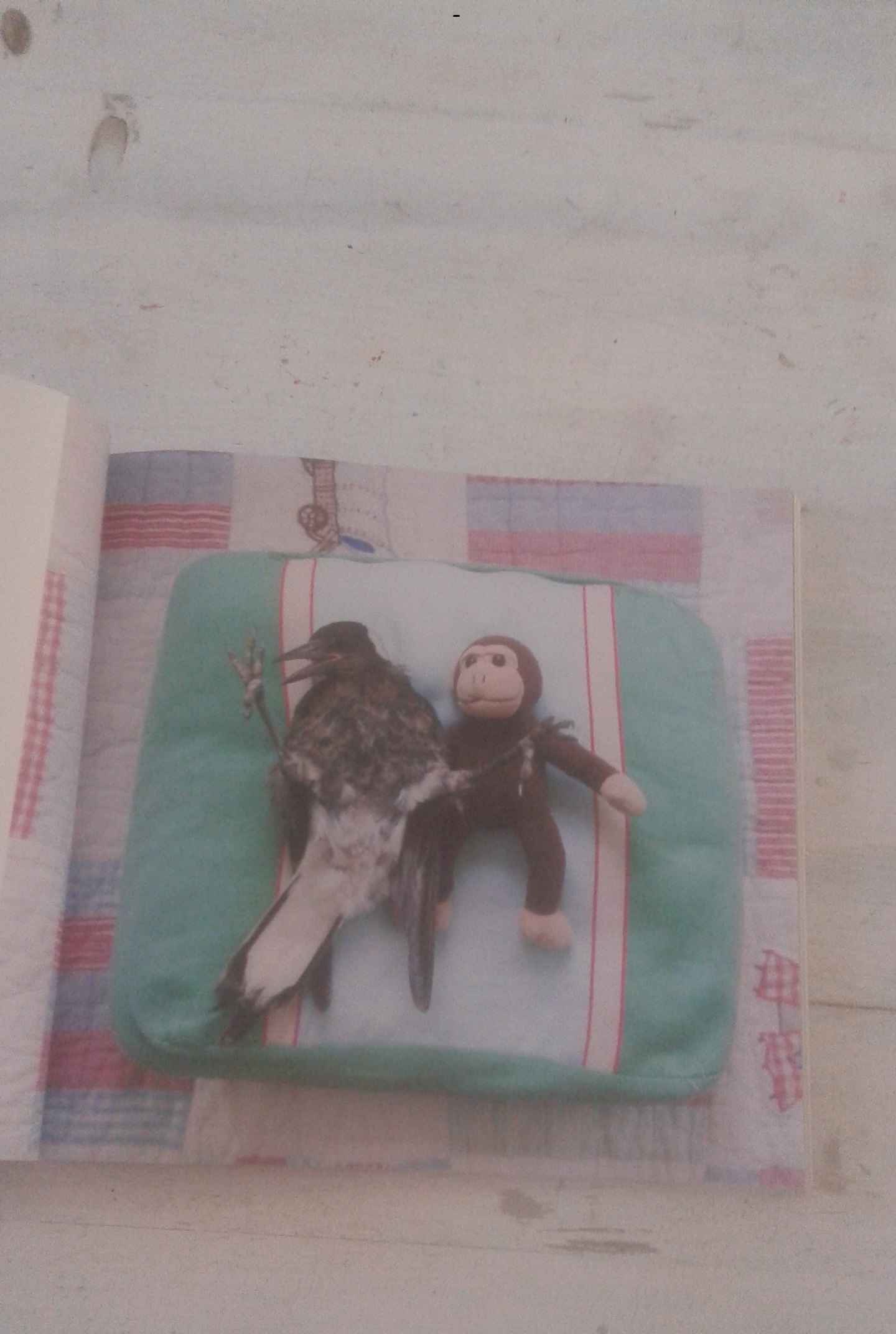
Besides our love for the ocean, we shared a passion for travel. Whenever we could get away to explore the world and experience new cultures we would shrug on backpacks and set off for parts unknown. We didn’t have much money, but that didn’t matter as neither of us cared for luxury resorts or packaged holidays. Sam and I are outdoors people, we prefer dusty trails to city streets, mud huts to museums and street food to dining…….. By the time we’d celebrated our tenth anniversary we’d trekked around the Mediterranean and beyond, Sam’s dream to visit Africa was realized five times over….. We also explored the Middle East and set foot in places that are now completely off-limits to tourists. The further we went, the more we fell in love. The more deeply we fell in love, the further we wanted to travel.
Her injuries are such that she can never feel comfortable, regardless of the resting surface or her body position….. Even when Sam goes to bed she is denied the sweet relief of a good night’s sleep. I help her turn over three times before dawn in order to maintain her circulation and to prevent pressure sores.
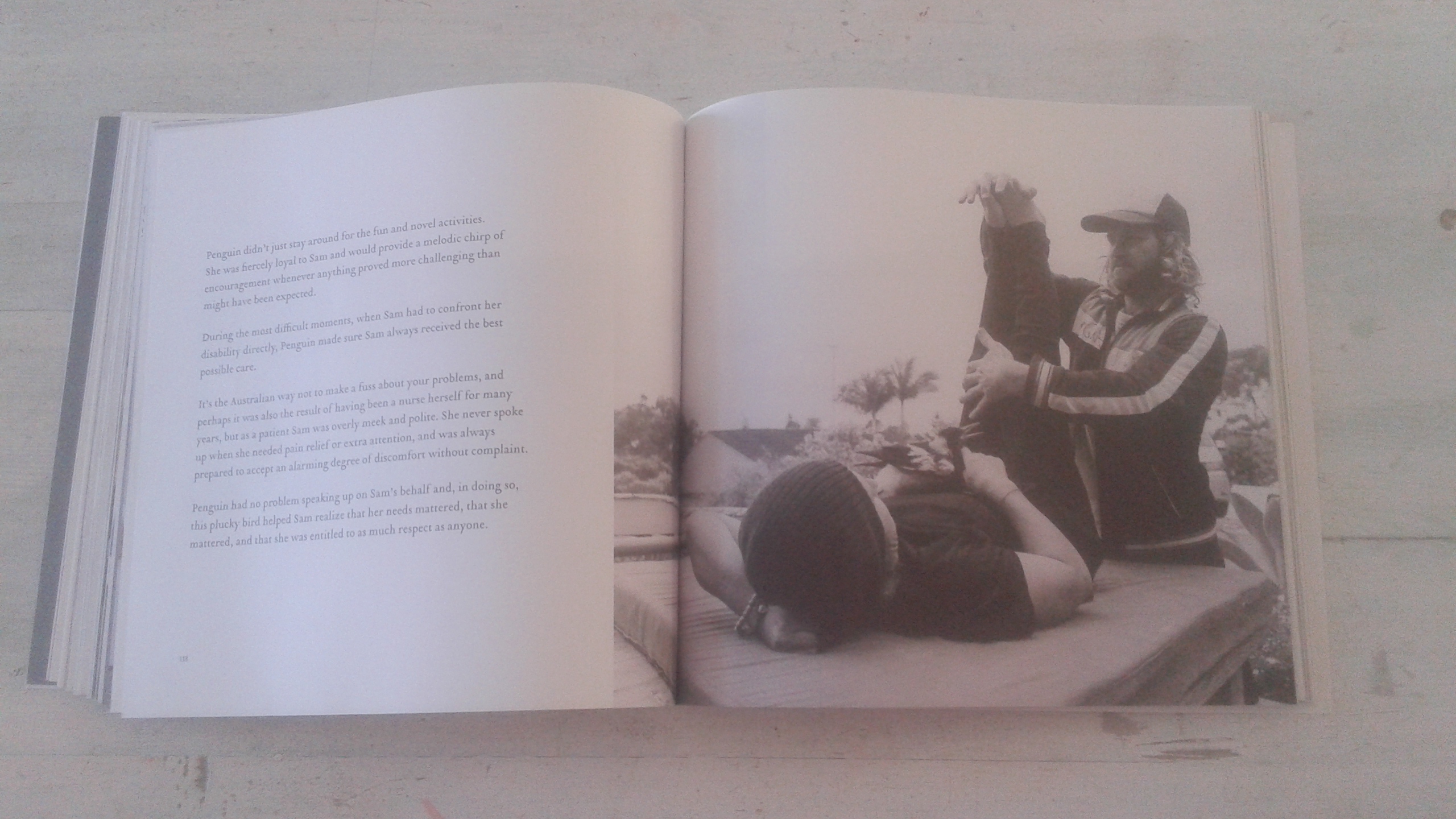
Sam felt broken and utterly adrift. I saw the light in her eyes grow dim. I knew she was withdrawing from this world. That such a fiercely free and passionate spirit could now be anchored beyond our love by pain and a steel chair was too much for us to bear……
And this is where penguin came into her own. She was our fearless ambassador of love and chief motivational officer…….. Penguin had no problem speaking up on Sam’s behalf and, in doing so, this plucky bird helped Sam realize that her needs mattered….
From cradling Penguin in my hands and holding Sam in my arms I can tell you that every nerve cell, every blood vessel, every atom of our being is precious. But we are all so much more than the sum of our fragile parts. We are all our journeys, hopes, and dreams, clad in mortal wrapping paper.
In the epilogue there is a personal message from Sam, who writes about what it is really like to face life in a wheelchair, without glossing over her loss or struggles:
Becoming a paraplegic has not been an unexpected gift; the new perspectives granted me cannot be equated with a great spiritual awakening, and I don’t feel this experience has made me a better person or given me new found purpose.
It has given me the chance to see the very best in my husband and our children, even while I was at my lowest point. These are beautiful insights for which I am grateful, despite their appalling cost….. Without the support of my husband and our children, our immediate families, and our dearest friends (especially Penguin), I’m not sure I would still be here, and I know I wouldn’t be doing as well as I am.
 In this week’s (19/05/2025) Being Well podcast, which you can watch at: https://www.youtube.com/watch?v=F4hhBkOFfwU, Forrest, and his father, Rick Hanson, explore disorganized or what is also considered the more “fearful” attachment style, which typically arises as a result of trauma or / and difficult life experiences, especially early on in life, and involves both anxious and avoidant modes of insecure attachment, where both emotional intimacy and distance can feel uncomfortable. They touch upon various aspects and questions concerning attachment theory** , developments in the field, and suggestions on how to heal through integrating parts of ourselves that carry uunmet (emotional) needs.
In this week’s (19/05/2025) Being Well podcast, which you can watch at: https://www.youtube.com/watch?v=F4hhBkOFfwU, Forrest, and his father, Rick Hanson, explore disorganized or what is also considered the more “fearful” attachment style, which typically arises as a result of trauma or / and difficult life experiences, especially early on in life, and involves both anxious and avoidant modes of insecure attachment, where both emotional intimacy and distance can feel uncomfortable. They touch upon various aspects and questions concerning attachment theory** , developments in the field, and suggestions on how to heal through integrating parts of ourselves that carry uunmet (emotional) needs.
**British psychologist John Bowlby was the first attachment theorist, who was interested in understanding the anxiety and distress that children experience when separated from their primary caregivers. Bowlby saw attachment as the secure base from which a child moves out into the world. He believed that the earliest bonds formed by children with their caregivers have a tremendous impact throughout life. Bowlby and others, viewed attachment mostly as a product of evolutionary processes, and proposed that children are born with an innate drive to form attachments with caregivers. Throughout history, children who maintained proximity to an attachment figure were more likely to receive comfort and protection and, therefore, more likely to survive to adulthood, and so through the process of natural selection, a motivational system designed to regulate attachment emerged. The central theme of attachment theory is that primary caregivers, who are available, consistent and responsive to an infant’s needs allow the child to develop a sense of security, and to learn that the caregiver is dependable, which creates a secure base, that allows the child to explore the world.
What we now know about attachment has evolved, and the ways we tend to attach to others can shift over time, both for the best (earned secure attachment) and the worst, depending on our experiences and relationships. The neuroplasticity of the brain allows for changes to occur throughout our life, and allows us to shift from insecure attachment styles to a more secure state of being and relating. It’s also useful to remember that we probably use different styles or combinations of secure and insecure relating with different people, and in different contexts and phases of our life. A more contemporary attachment theory views attachment as dynamic and less static, a process also shaped by nervous system states moment to moment, as well as, circumstances.
During this episode Forrest and Rick talk about attachment theory and styles, and the influence of both our temperament and broader social environments beyond family; leveraging coping mechanisms, even seemingly dysfunctional ones, for healing, through firstly understanding which coping mechanisms we used as children, but also later on; why “boring” relationships can be transformative, and more.There are references to Mary Ainsworth’s research, and Kim Bartholomew and Leonard Horowitz’s 1990s model of four prototypic attachment patterns, which are defined by using combinations of our (positive or negative) self-image and our (positive or negative) image of others. There’s mention of Margaret Mahler’s, separation–individuation theory of child development, in which rapprochement is a crucial phase where infants, typically during their second year, begin to navigate their growing independence while maintaining a sense of closeness with their primary caregiver, as they develop greater awareness of self and separateness from the mother or other caregiver.

Finally, what we call disorganized attachment is often closely linked to [complex] trauma, so the last part of the podcast focuses on the more trauma-informed therapeutic approaches, what good, healthy, reliable relationships feel and look like [they include predictability, and consistency, and emotional validation, and they aren’t punishment oriented], and the questions and steps one could ask and take in order to embrace the more anxious, avoidant or ambivalent parts of oneself, so as to reach a place of more agency and choice. They suggest ways to develop more secure attachments through self trust, self respect, and through embracing our unmet needs, giving a voice to the aspects of ourself that were voiceless, and actually feeling free to fully embrace what we really want and to pull for appropriate social supplies from others. Rick says: “You’re giving voice to the despairing child inside, who watched the caregiver just walk out of the room….. You become integrated through self-expression, your own expression….. Τhere’s kind of a paradox that the more that we are full-throated and wholehearted in what we communicate, the less we need perfect attunement from others.”

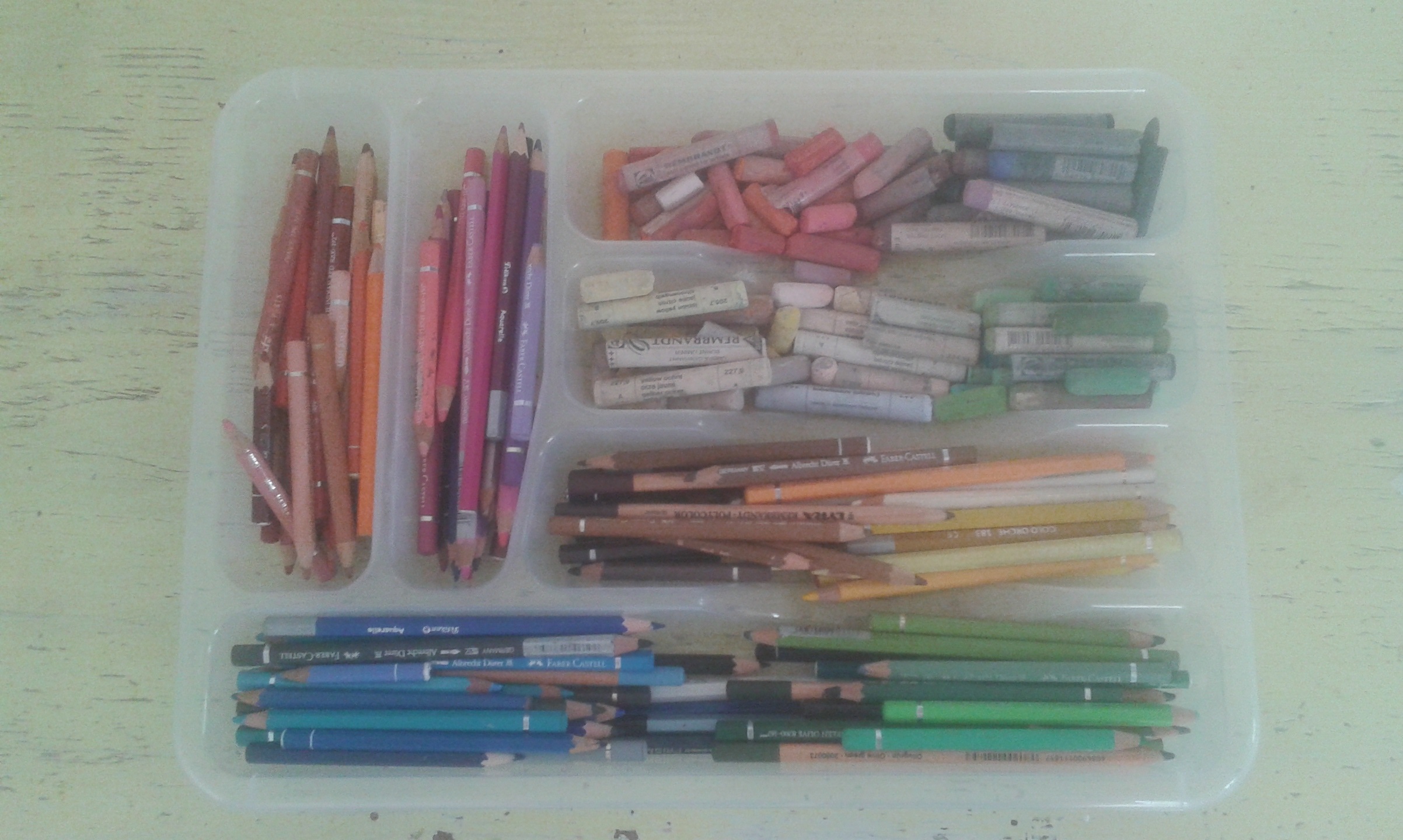 The Secret Lives of Colour, written by Kassia St. Clair, is a historical exploration of the world of colours. St. Clair illustrates how important colours have been in human history and what individual colors have meant throughout the centuries. She discusses how colours exist as much in the socio-cultural and political realm, as they do physically, and therefore, should also be understood as subjective cultural creations.
The Secret Lives of Colour, written by Kassia St. Clair, is a historical exploration of the world of colours. St. Clair illustrates how important colours have been in human history and what individual colors have meant throughout the centuries. She discusses how colours exist as much in the socio-cultural and political realm, as they do physically, and therefore, should also be understood as subjective cultural creations.